How to Read Contour and How to Use It
Though not the only aspect of drawing that you as an artist will need to know, contour is definitely one of the most important.
Contour is the outline of an object that you see in real life.
Contour also refers to the lines you draw on your paper.
When you draw from observation, you need to read the contours of an object accurately first. You need to run your eyes along the outside edge of the object you’re studying, commit its contours into memory, then you need to translate what you see into line.
I will give a demonstration on how I read and lay down contour in my drawings:
First, we have a photograph of a hand. This is the reference I will be using.
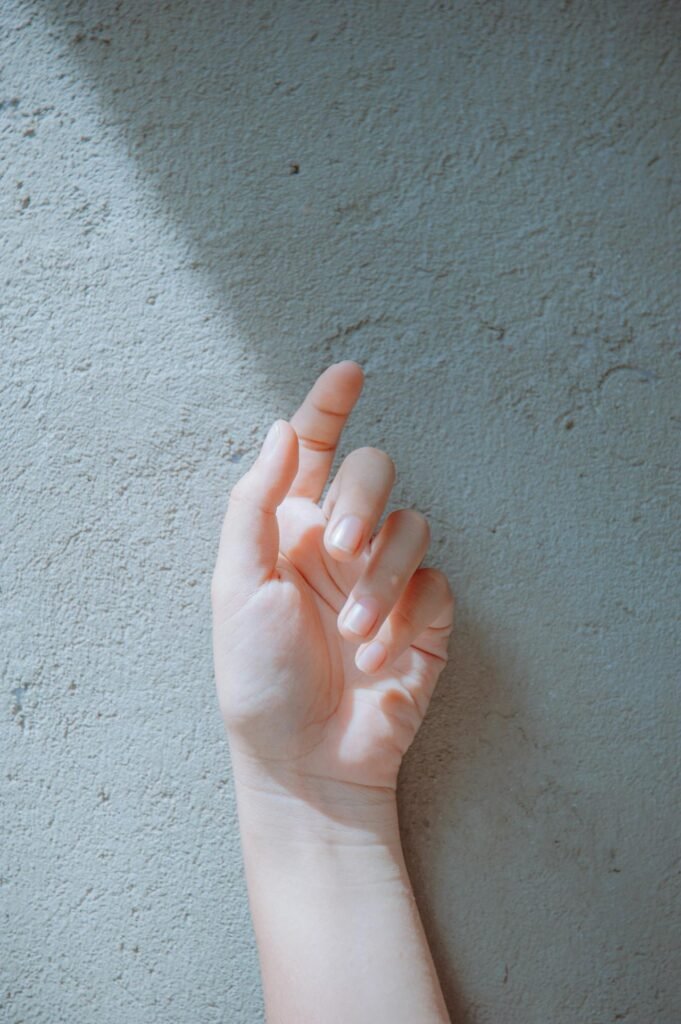
I’m going to start anywhere. I’m choosing the tip of the thumb.
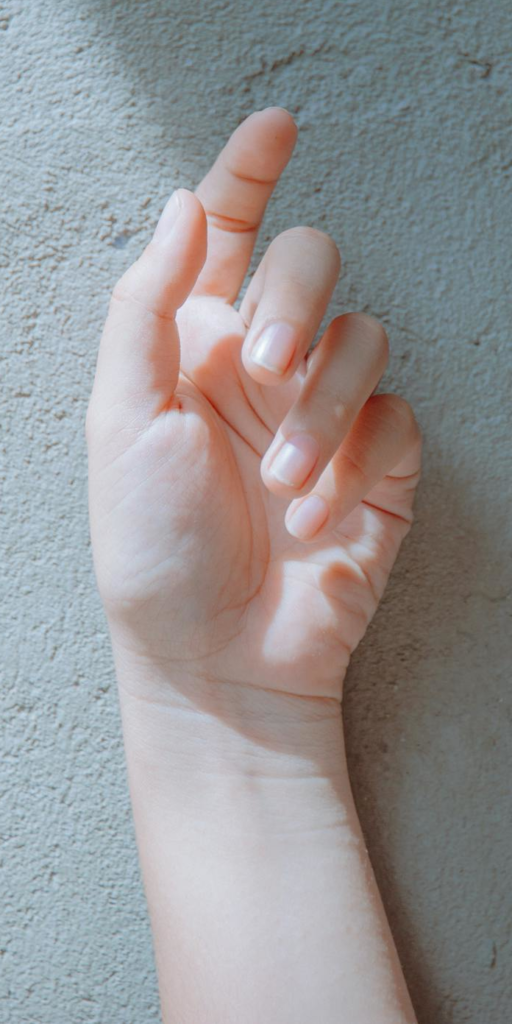
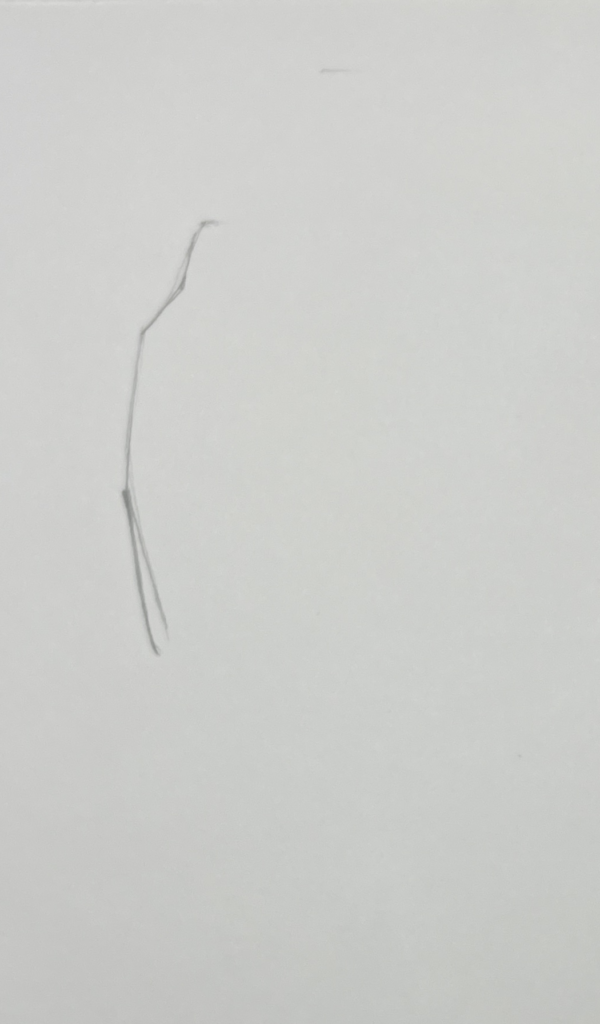
I run my eyes along the contour of the thumb, going along the hand’s right side, and commit it to memory as best I can.
I draw my line. I will attempt to draw the line based on what I’ve seen. My eye should take the same direction along my drawn line as it did along the contour of the actual thumb.
If I make a mistake, what I’ll do is leave it, redraw the line in the way I believe is correct, and erase later. The reason I do this is because a mistake can be a reference point in and of itself, showing you where you shouldn’t put the line when you draw the correction.
As I draw, I’m making visual judgments. I’m thinking how long each part is compared to others. How long is the top segment of the thumb compared to the bottom segment? How long are both parts compared to the leftmost outline of the palm beneath the thumb?
I will constantly be making these judgements as I go. I will erase and redraw if something doesn’t look right. If something is too long, I’ll redraw it shorter; if it’s too short, I’ll redraw it longer.
And I have to constantly look between the photo reference and my drawing. Each time, I must pick a point on the reference, follow it with my eyes, commit it to memory best I can, then check it on my drawing.
Moving along, I continue drawing along the index finger.

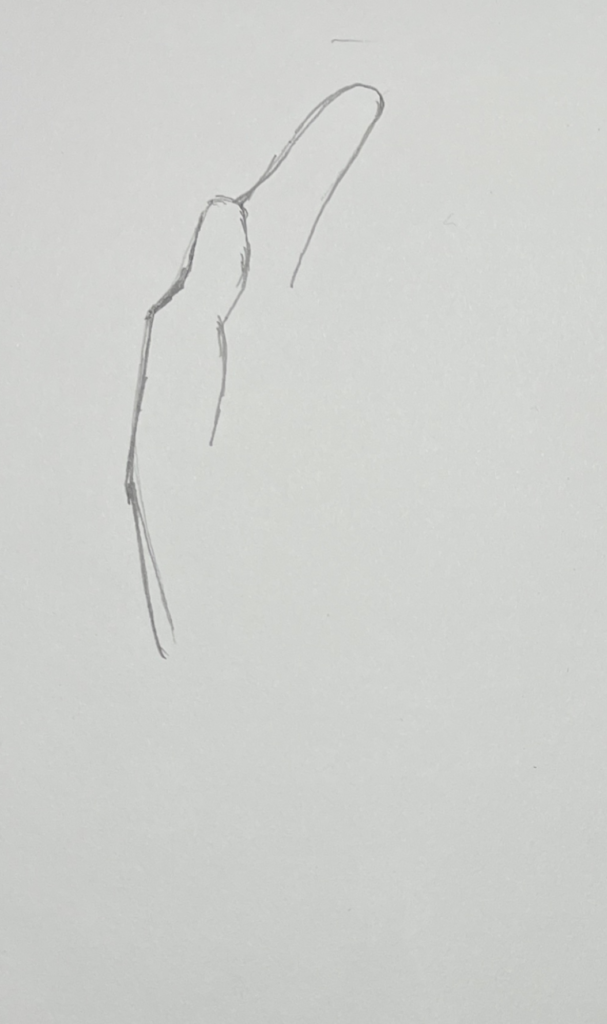
The middle finger.

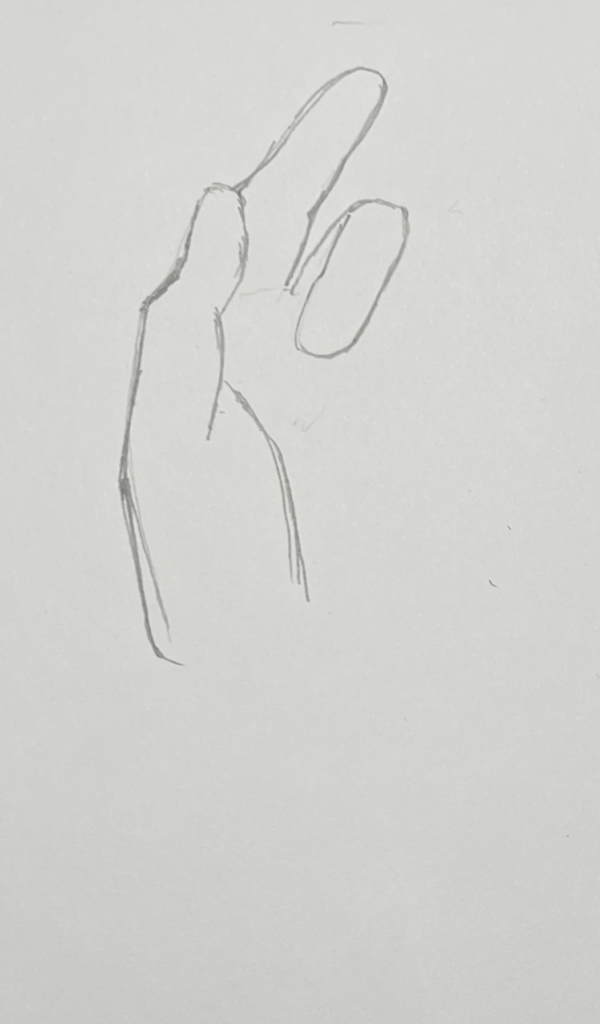
The ring finger.

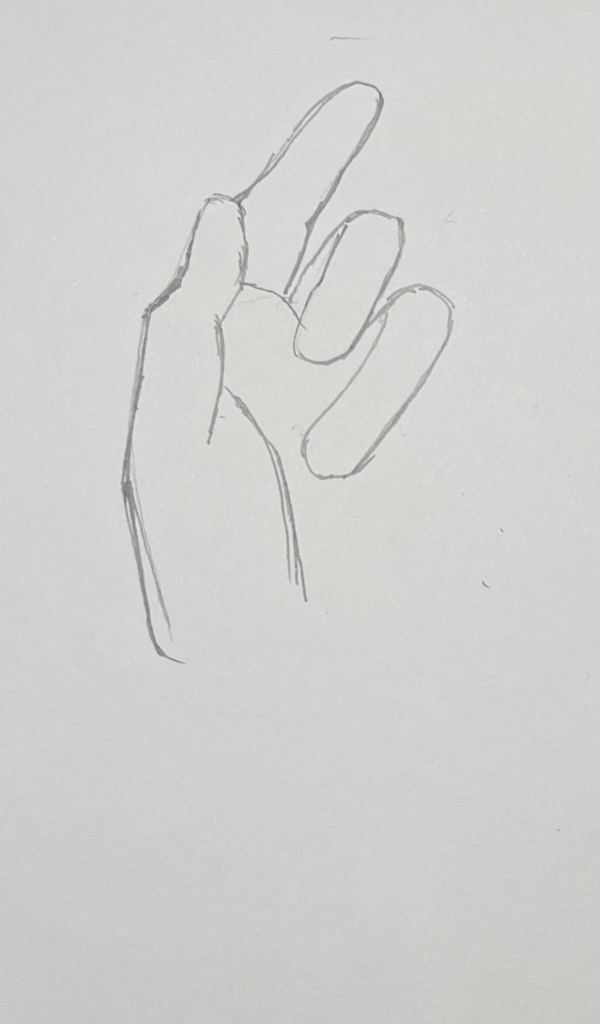
Another thing I’m making judgements about along the way is spacing. How far is this contour from another? The tips of the fingers are a certain distance from the round, fleshy base of the thumb. (By the way, this is called the “thenar eminence”.) If I can get this right, I won’t have to correct mistakes later. I’m also making sure each finger seems to be the right width, not too narrow, not too wide.
I make sure to get the angles of the fingers right.
I don’t have too much trouble, but if I should ever need a little help judging angles, what I can do is hold up my pencil to the reference and make judgements about angles. I do this by holding the pen straight flush against the reference, either straight vertical or straight horizontal, and closing one eye to see what the angle looks like against the pencil. This is called using plumb and level and can be invaluable.
This can be done when observing from life, but you have to do it with forced perspective. Hold your arm straight out, lock your elbow (and this is because this will keep your distance and steadiness consistent), close one eye, and bring the pencil up to the angle you want to measure, holding it straight up and down or straight left and right.


I continue down the pinky and right side of the hand.

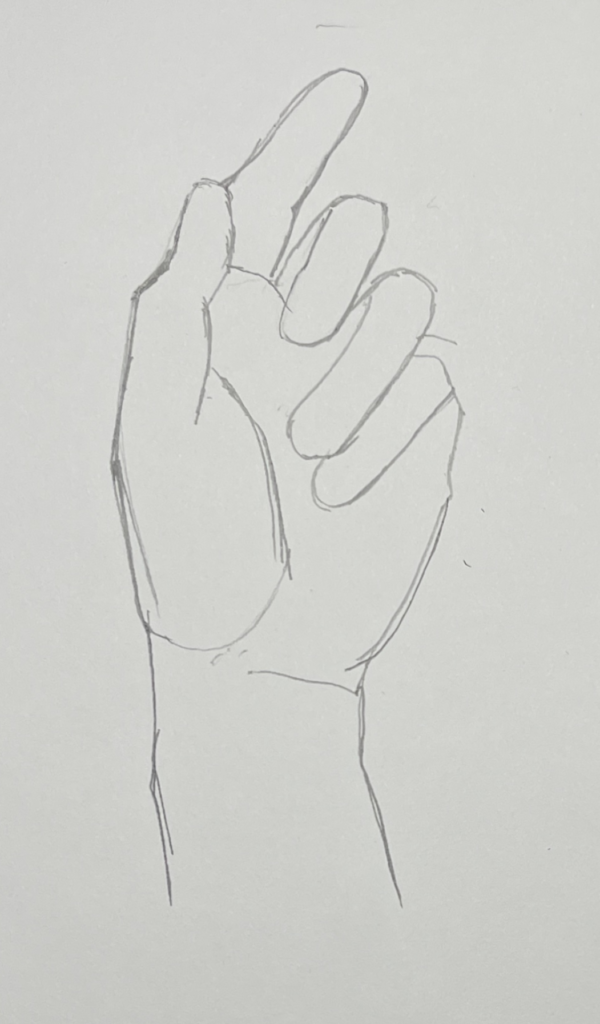
Now, I’m going to finish the hand and make corrections. I will, of course, refer to the reference constantly, tracing my eyes along all contours, checking them on my drawings, then erasing and redrawing as I need to.

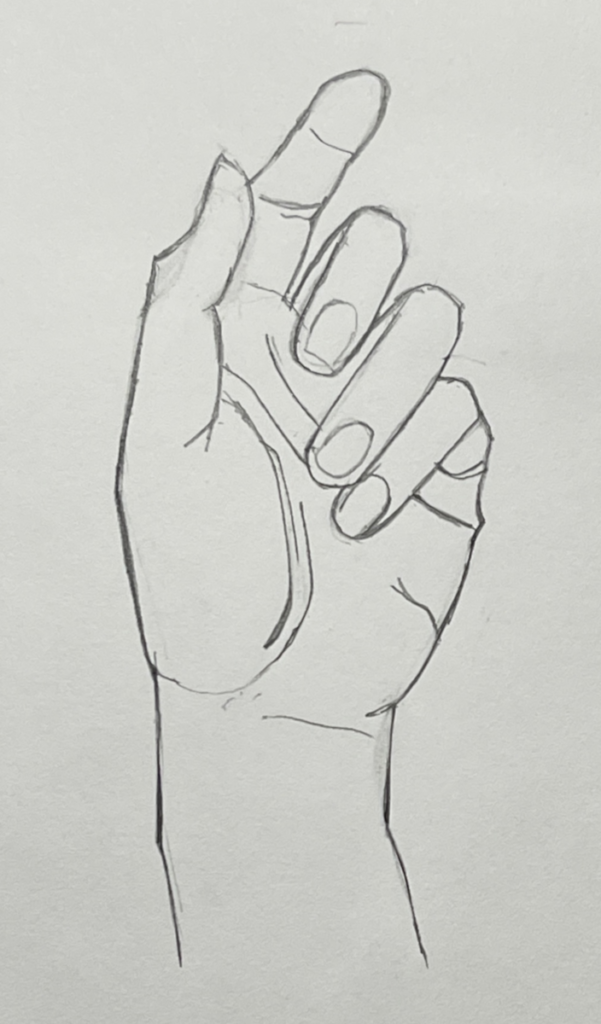
I corrected the shape of the thumb. I had to make it a little longer as well, as I saw the tip of the thumb didn’t align with middle segment of the index finger as it does in the photo.
I erase stray lines and try to clean up the contours as best I can.
How Contour and Construction Work Together
Here is another way to use contour. I prefer to use contour after blocking things out with construction. That means I simplify everything into their basic shapes, then I draw the exact contours of the object on top of the understructure. Later, I’ll erase the construction drawing.
This is far easier for me, as I can worry about proportion, general shape, spacing, etc., all before having to worry about exact detail with the contour.
I’ll redraw the same hand to demonstrate:

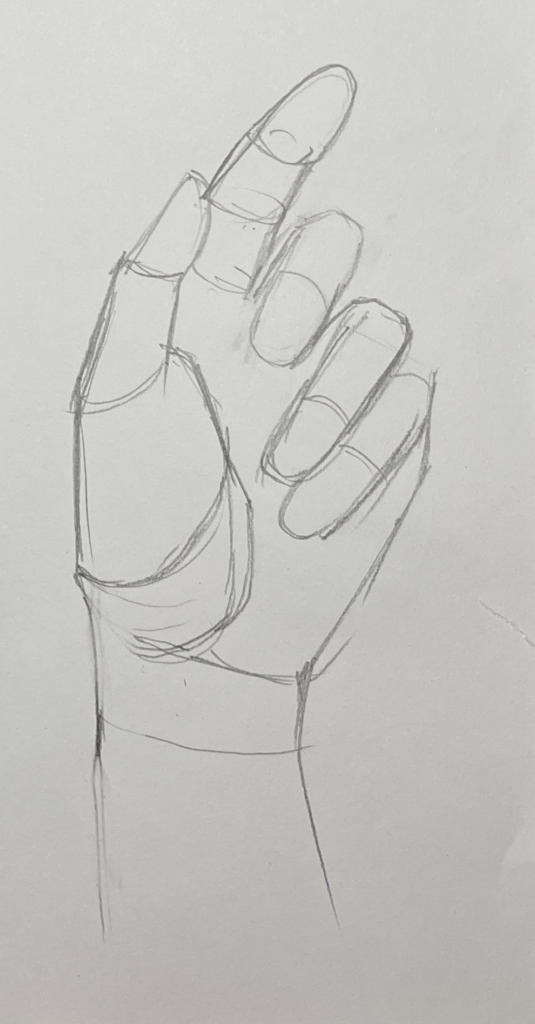
First, I’ll simplify things out into the most general shapes of the hand. I move fairly quickly here, trying to get in all the different forms and shapes I see in the hand. I segment things out, I get in general proportions, angles, spacing.

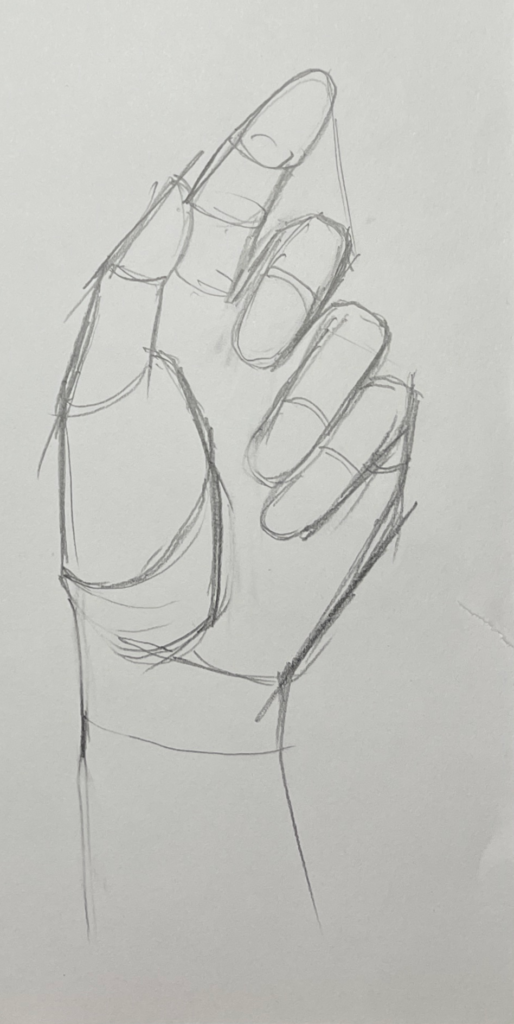
Here you see me draw lines around the fingers to check angles and relationships (alignments).

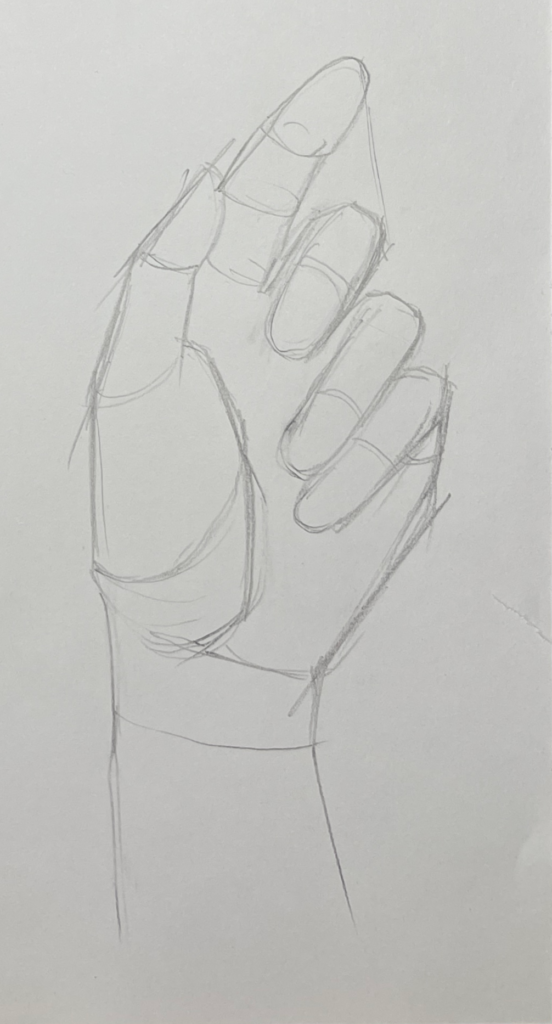
Now, I lighten things up by rolling a kneaded eraser over the drawing. This will make it easier for me to see the contours I’m about to draw over the framework.

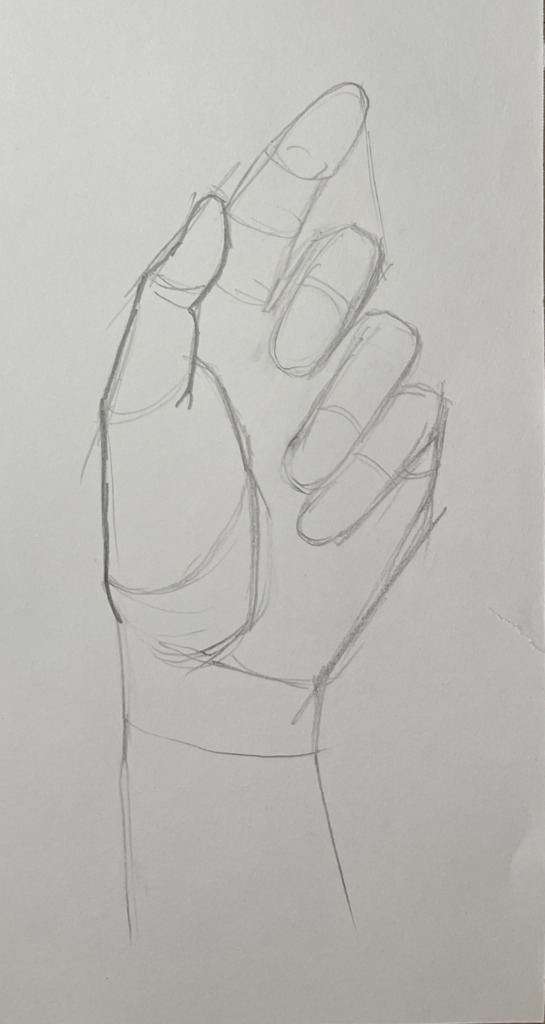
Now, I begin the contouring. Again, I start with the thumb. I trace my eyes over the contours of the thumb of the real hand. I draw my lines out on my paper, checking that my eyes take the same path as they do on the reference when I look over them.
Of course, because I have the structure work down as a guide, I don’t have to worry about my contours going too far lopsided as I draw them.
And this is the beauty of having an understructure when drawing. Might not mean I won’t make any mistakes, but I hopefully won’t make as many of them or make ones that go too far off the mark.
I continue on to the index finger, the middle finger. I put in the middle finger’s fingernail.

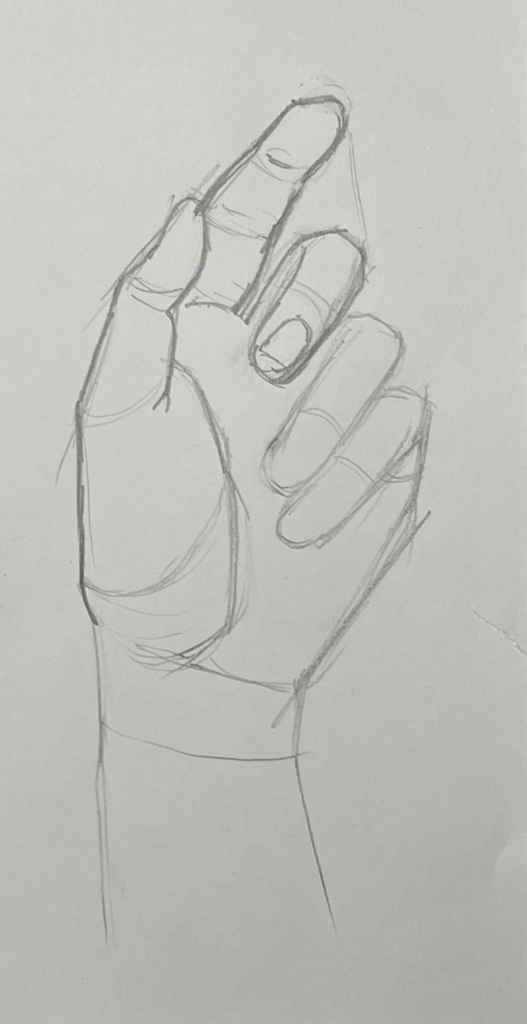
I go on to the ring finger.

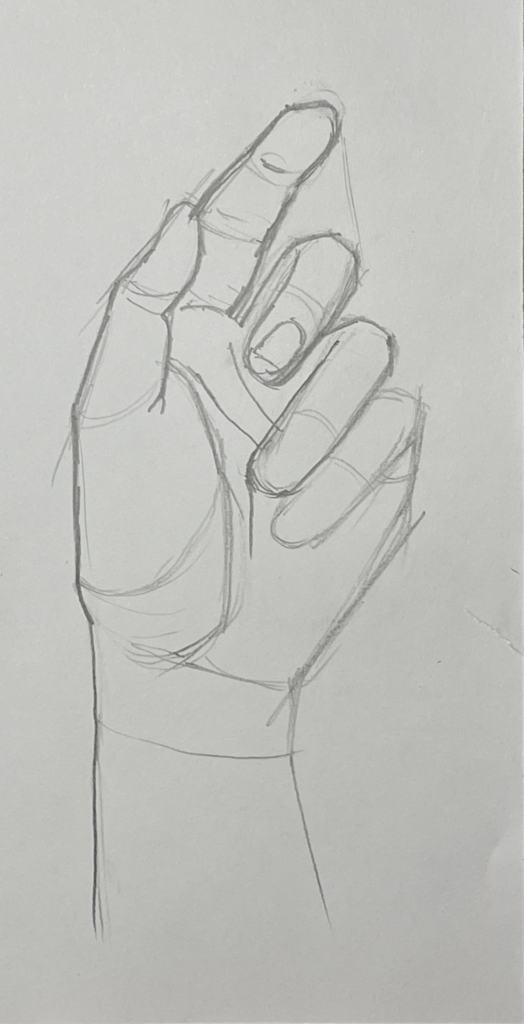
I bring the drawing to a close by putting in the rest of the fingernails, the lines and details of the palm. I make sure all angles are correct, make corrections to lengths, widths, other proportions. Now, I erase out the understructure drawing.

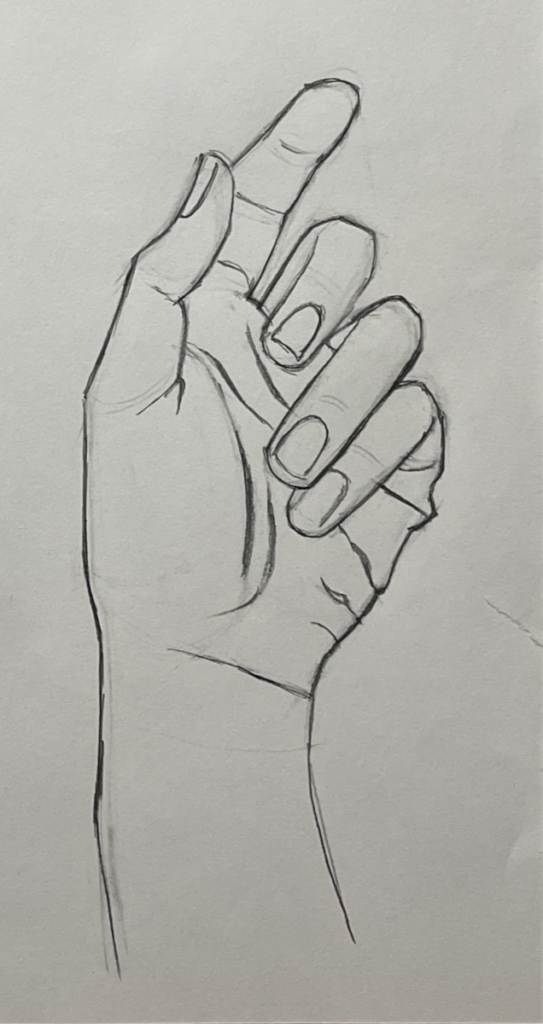
This is how you make construction and contour drawing harmonize. The construction drawing gives you a framework to draw on top of. Then, you draw on the exact contours with little worry. The use of both should get you a well-structured drawing you should be ready to render.
